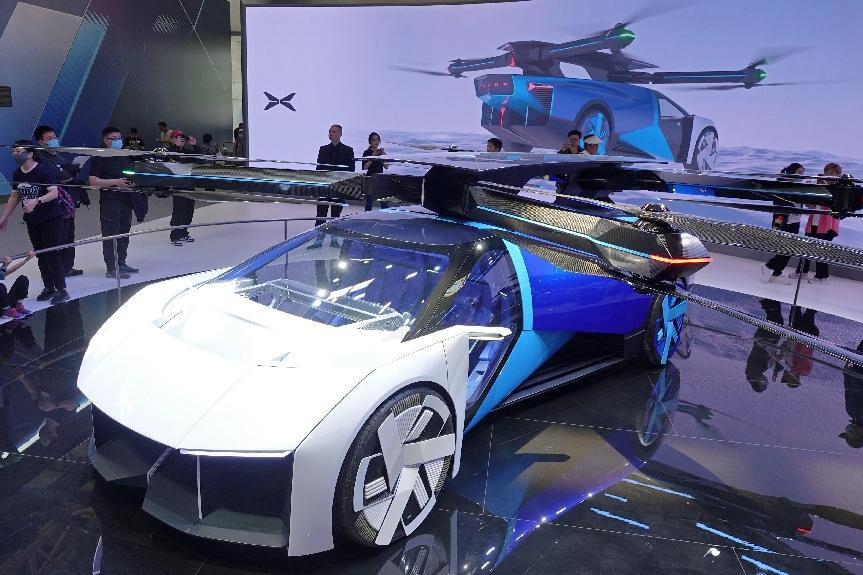Chinese electric vehicle manufacturer XPeng is set to revolutionize the automotive and aviation industries with its ambitious plan to mass-produce modular flying cars by 2026. If successful, XPeng will become the world’s first company to bring flying vehicles to the mass market.

Flying Cars and Humanoid Robots on the Horizon
XPeng Motors’ chairman and CEO, He Xiaopeng, recently confirmed that the company is on track to begin large-scale production of its modular flying cars in the second quarter of 2026. Additionally, XPeng plans to introduce humanoid robots with Level 3 autonomy as early as next year. Following this announcement, XPeng’s stock prices surged, reflecting investor enthusiasm for the company’s innovative strides.
XPeng’s humanoid robot, named Iron, debuted last year, boasting over 60 joints and 200 degrees of freedom. Powered by XPeng’s proprietary Turing AI chip, Iron is expected to serve beyond manufacturing, potentially filling roles in administration, customer service, and personal assistance.
The XPeng AEROHT Flying Car: A Modular Innovation
XPeng AEROHT, a subsidiary of XPeng Motors and the largest flying car company in Asia, unveiled an operational version of its electric vertical takeoff and landing (eVTOL) vehicle at CES 2025 in January. Pre-sales for the flying car have already begun, with pricing set between 1 and 2 million RMB.
Dubbed the “Land Aircraft Carrier,” XPeng’s modular flying car consists of two key components: a ground module and an air module.
- The ground module (Mothership): A 6×6 all-wheel-drive electric vehicle with rear-wheel steering and off-road capabilities. Designed with a futuristic cyber-mech aesthetic, it features a four-seat cabin and a range of over 1,000 kilometers.
- The air module: A detachable two-seat eVTOL unit that can be loaded and unloaded in under five minutes. Constructed from lightweight carbon fiber, it operates using six dual-duct rotors with foldable propellers. When not in use, the flight module is stored within the mothership, allowing the vehicle to fit into standard parking spaces and underground garages.
The Rise of the Low-Altitude Economy
XPeng AEROHT envisions itself as the “Global Leader in Low-Altitude Product Innovations.” The low-altitude economy, a burgeoning sector in China, focuses on airspace operations below 1,000 meters. Existing players in this industry include DJI, the world’s largest drone manufacturer, which has already implemented unmanned food delivery drones, and several air shuttle companies currently in pilot testing.
The first batch of XPeng’s flying cars is expected to serve specialized markets such as tourism and rescue operations before wider consumer adoption. Meanwhile, XPeng is also racing ahead with self-driving technology, aiming to launch Level 3 autonomous vehicles this year and introduce Level 4 capabilities soon after, which would allow for full self-driving in designated areas.
As the launch date approaches, XPeng’s advancements in flying vehicles and AI-powered robotics will be closely watched by industry players and consumers alike. More details are expected to emerge in the coming months as XPeng moves toward transforming the future of transportation.






